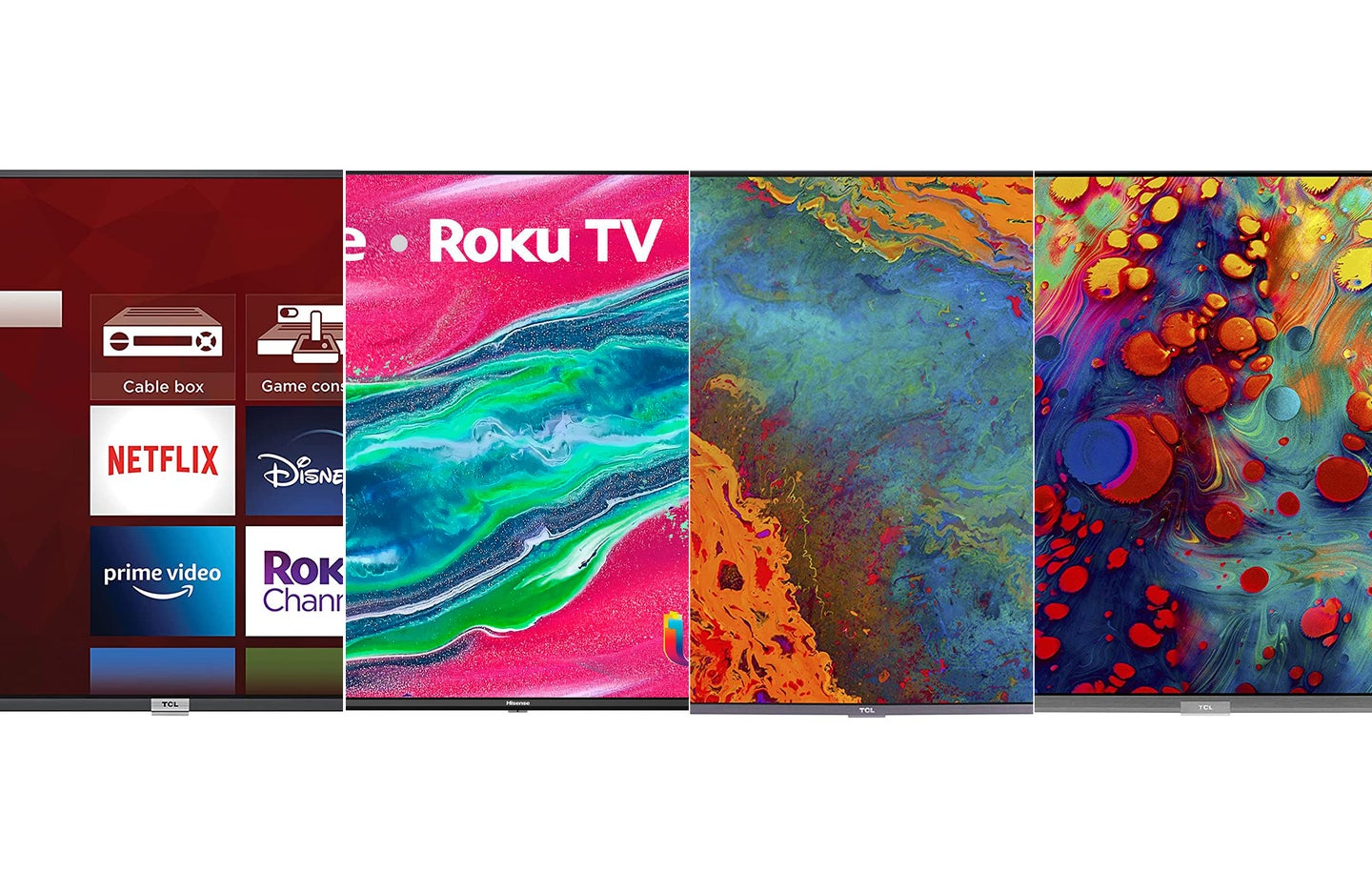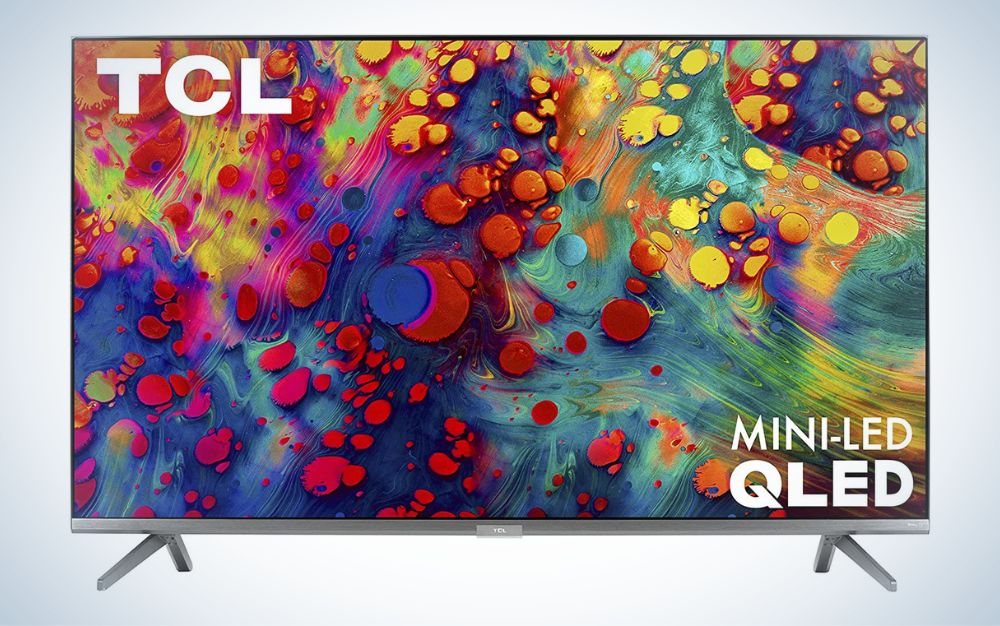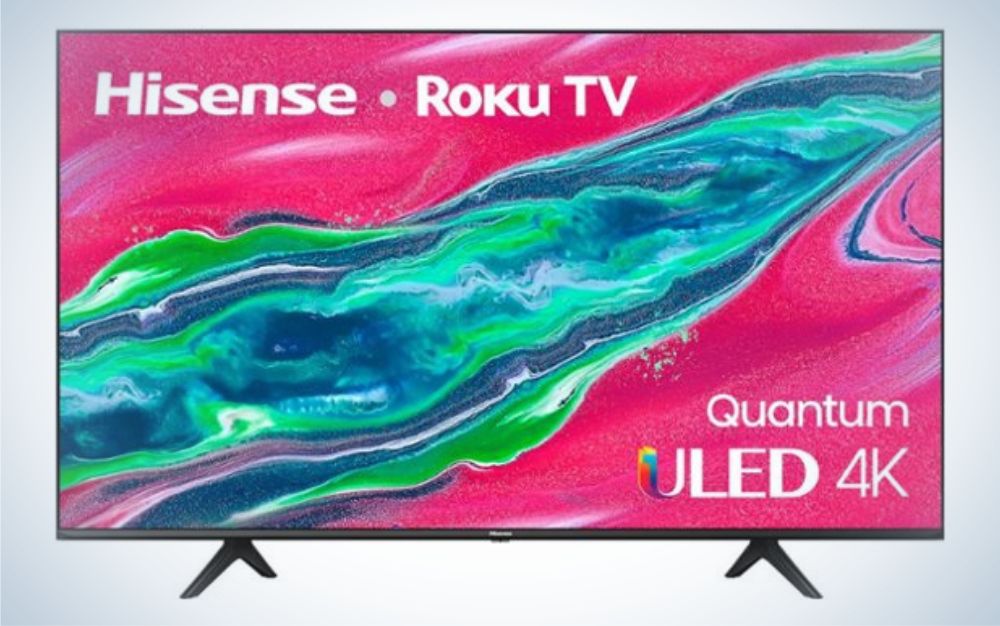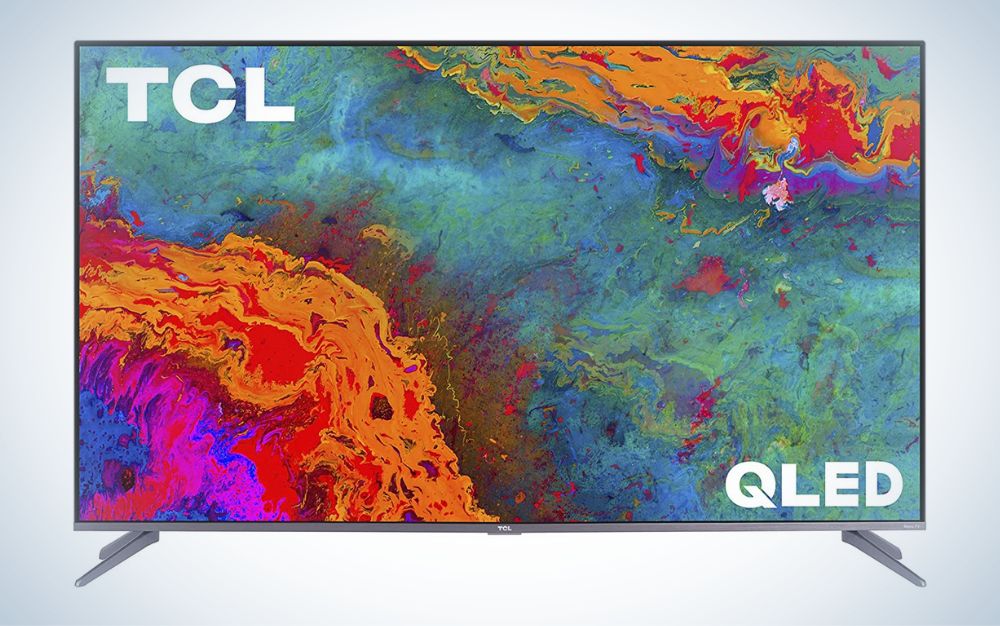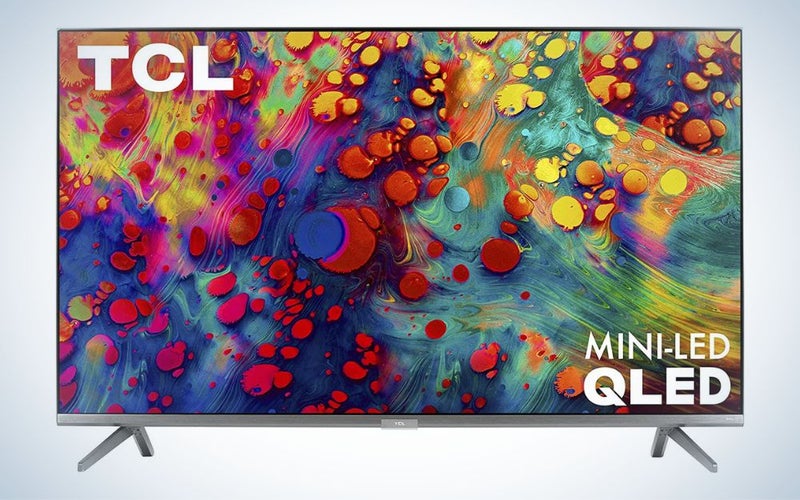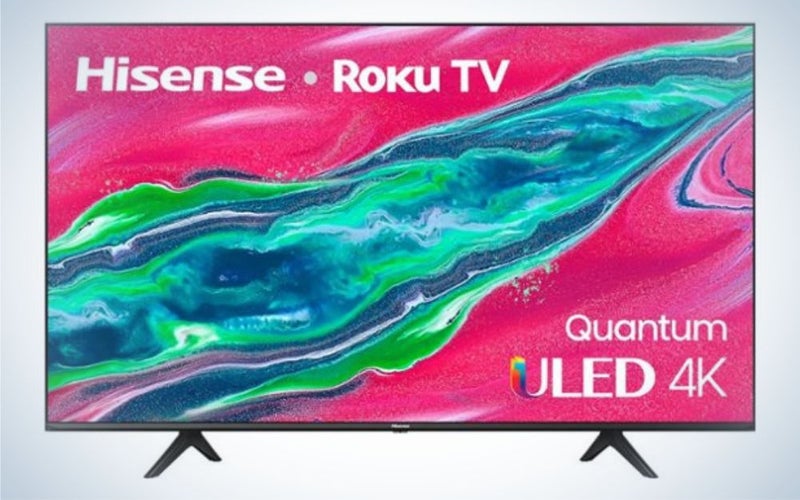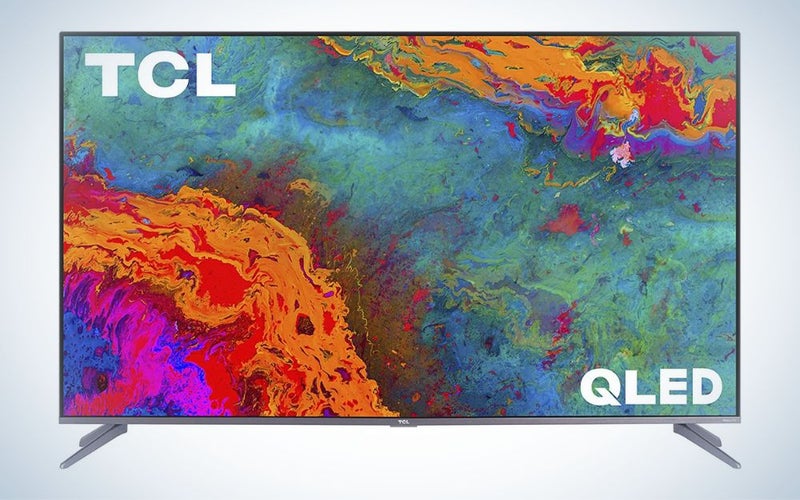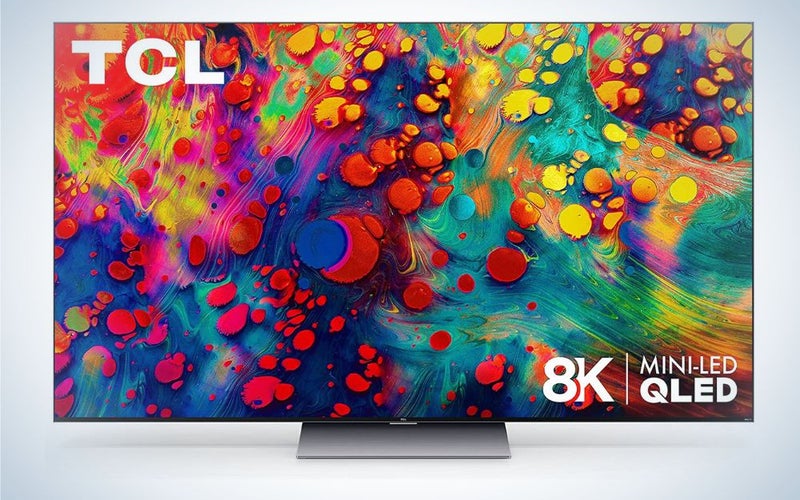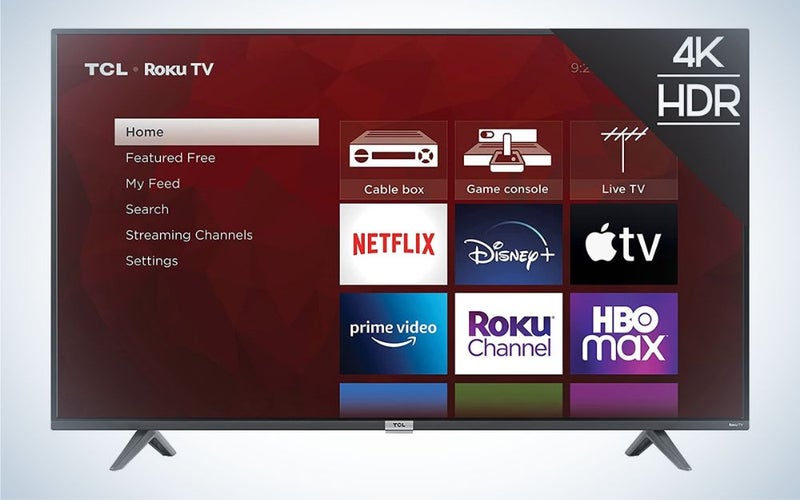We may earn revenue from the products available on this page and participate in affiliate programs. Learn more ›
Streaming device manufacturer Roku is one of the biggest names in little boxes that tuck beneath or behind your TV. But did you know that they also make one of the best smart TV operating systems around? Roku TVs, which employ the Roku interface as their smart TV menu, come from a handful of manufacturers, including a whole line of affordable TVs from TCL. Roku’s intuitive menus make it easy to adjust TV features and gain access to your favorite streaming services—including Netflix, Disney+, and Hulu—without any additional hardware. If you’re looking for an all-in-one smart TV that’s easy to use, you can’t go wrong with the best Roku TVs.
- Best overall: TCL 6-Series Roku TV
- Best 65-inch: Hisense U6GR Series
- Best 55-inch: TCL 5-Series Roku TV
- Best QLED: TCL 6-Series 8K Roku TV
- Best budget: TCL 4-Series Roku TV
What is a smart TV?
In 2022, all new TVs are smart TVs. The term “smart TV” refers to any TV with an operating system that connects to the internet, allowing you to update firmware and, more importantly, download apps for streaming services like Netflix, Amazon Prime, and HBO Max.
The smart TV interface has become an essential component of the TV-watching experience. Data from Comscore suggests that internet-connected smart TVs are the primary way households consume streaming content. They eliminate the need for a dedicated streaming device, streamlining the process of finding what you want to watch when you turn your TV on. In fact, many smart TVs can integrate into smart home setups and support virtual assistants like Alexa and the Google Assistant, so you can turn your TV on using only your voice.
These systems have as much in common with smartphones and tablets as they do with the set-top boxes they’re replacing. In addition to offering preloaded software, smart TVs come equipped with a System-on-a-Chip (SoC) that powers the entire experience, from input switching to image processing. These processors also enable the more advanced features in smart TVs, like automatically adjusting the sound and picture.
Meanwhile, having access to software updates and an advanced processor enables TVs to gain new features after you purchase them. For example, Sony recently rolled out support for variable refresh rate (VRR) on several of its 2021 TVs, including the Bravia XR A90J, which we’ve recommended a few times. You can’t get that experience from an old TV.
How we picked the best Roku TVs
I’ve written several TV guides for Popular Science, while PopSci’s Gear team has evaluated dozens of TVs from across the market. The below recommendations were informed by experience, hands-on testing, and in-depth research into specs and technology. We also checked professional reviews and consumer impressions to see which TVs work for people and which ones don’t.
The best Roku TVs: Reviews & Recommendations
There are dozens of Roku TVs available from a few manufacturers, but the market is dominated by TCL, the manufacturer that popularized Roku TVs. For the most part, Roku TVs are affordable options that offer a mix of old and new technologies and offer pretty good picture quality. However, if you want the best of the best, you may want to look elsewhere.
Best overall: TCL 6-Series Roku TV (R635)
TCL
Buy it used or refurbished: eBay
Why it made the cut: The TCL 6-Series Roku TV features an impressive 4K panel, four HDMI 2.0 ports, and variable refresh rate support.
Specs
- Sizes: 55”, 65”, 75”
- Display: QLED
- Refresh rate: 120Hz
- HDR: HDR10, Dolby Vision
- Ports: HDMI 2.0 x 4, USB 2.0, Ethernet, Bluetooth
Pros
- Sharp, vibrant picture
- 120Hz support
- Four HDMI 2.0 ports
Cons
- Lacks HDMI 2.1
The TCL 6-Series Roku TV is easily one of the best sub-$1,000 TVs you can buy. The sharp QLED panel delivers impressive brightness and color, plus excellent HDR performance that rivals some OLED TVs. It also includes Automatic low-latency mode, variable refresh rate support, and a higher 120Hz refresh rate—three features that will make gamers very happy.
It’s worth noting, however, that it only supports 1080p at 120Hz, rather than 4K at 120Hz, due to the lack of HDMI 2.1. Even with that caveat, the TCL 6-Series Roku TV has a bold look and incredible value.
Best 65-inch: Hisense U6GR
Hisense
Buy it used or refurbished: eBay
Why it made the cut: The Hisense U6GR puts Roku front and center with a fabulous 4K display and support for different HDR standards.
Specs
- Sizes: 65”
- Display: ULED
- Refresh rate: 60Hz
- HDR: HDR10, Dolby Vision
- Ports: HDMI 2.0 x 4, USB 2.0, Ethernet, Bluetooth
Pros
- Excellent 4K image
- HDR10 and Dolby Vision support
- Ample HDMI ports
Cons
- Only 60Hz refresh rate
TCL’s TVs are the most common and popular on the Roku TV block but don’t sleep on Hisense’s U6GR. A Roku-enabled variant of the company’s U6G line, it offers a solid picture and some bells and whistles you’d normally expect from a more expensive model. The UG6R features Hisense’s proprietary ULED technology, which uses proprietary technology to enhance colors, motion, and contrast. It also features quantum-dot technology to provide a brighter, more vivid picture. The Hisense Class U6G Series also includes several features gamers will appreciate, including variable refresh rate and automatic low-latency mode. The Hisense UGR is a strong mid-range option, especially if you’re shopping for a larger screen.
If you’re searching for the best 65-inch Roku TV, the Hisense Class U6G Series is a great choice.
Best 55-inch: TCL 5-Series Roku TV
TCL
Buy it used or refurbished: eBay
Why it made the cut: The TCL 5-Series makes QLED technology affordable, and it’s available in a dynamic and comfortable 55-inch form factor.
Specs
- Sizes: 50”, 55”, 65”, 75”
- Display: QLED
- Refresh rate: 60Hz
- HDR: HDR10, Dolby Vision
- Ports: HDMI 2.0 x 4, USB, Ethernet
Pros
- Vibrant QLED display
- Dolby Vision support
- Integrated cable management
Cons
- No HDMI 2.1
With a 4K display, HDR, and an automatic Game Mode, the TCL 5-Series is a very solid TV. Like the top-rated TCL 6-Series, the 5-Series features QLED technology, so colors, contrast, and brightness all get a boost. You also get support for HDR10, Dolby Vision, and voice control features, so you can open apps, turn up the volume, and search for your favorite show with minimal effort. While it lacks more advanced features like HDMI 2.1, the TCL 5-Series is an excellent pick if you want a nice-looking TV and don’t need to sweat the small stuff.
Best QLED: TCL 6-Series 8K (R648)
TCL
Buy it used or refurbished: eBay
Why it made the cut: The TCL 6-Series 8K is the most powerful Roku TV right now, with a fantastic 8K QLED display, HDMI 2.1, and Dolby Vision support.
Specs
- Sizes: 65”, 75”
- Display: QLED
- Refresh rate: 120Hz
- HDR: HDR10, Dolby Vision
- Ports: HDMI 2.1 x 2, HDMI 2.0 x 2, USB 2.0, Ethernet, Bluetooth
Pros
- 8K resolution support
- ALLM and VRR
- HDMI 2.1
Cons
- Narrow viewing angles
For the absolute best QLED picture quality, bar none, no Roku TV beats the TCL 6-Series 8K. That makes sense because it’s an 8K TV, which, as we explained, is more expensive and more powerful than most people need.
That said, it is a powerhouse. The 6-Series 8K’s, TK resolution features over 33 million pixels—that’s four times what you see in a 4K UHD image. The result is an incredibly sharp, vibrant picture unrivaled by anything else in the Roku TV market. A QLED panel elevates the brightness and color accuracy, while a localized contrast control feature optimizes for sharp, inky blacks across 240 “contrast zones” enhancing fine details wherever you look. The TCL 6-Series 8K also supports VRR, ALLM, and Dolby Vision. At nearly $2,000, it’s far and away the most expensive TV on this list, but it is also a comparative bargain if you find yourself compelled to make the jump to 8K.
Best budget: TCL 4-Series
TCL
Buy it used or refurbished: eBay
Why it made the cut: The TCL 4-Series is the perfect entry point into the Roku TV market, offering excellent picture quality at an affordable price.
Specs
- Sizes: 43”, 50”, 55”, 65”, 75”, 85”
- Display: LED
- Refresh rate: 60Hz
- HDR: HDR10
- Ports: HDMI 2.0 x 4, USB, Ethernet
Pros
- Vibrant QLED display
- Dolby Vision support
- Integrated cable management
Cons
- No HDMI 2.1
If you’re looking for something affordable, TCL returns to save the day yet again with its basic 4-Series line. As you might expect, the 4-Series dials down the color quality and features from the 5- and 6-Series, but still brings you nice 4K visuals with HDR10 support and HDMI 2.0. At this price point, the selling point of the 4-Series really is the Roku UI, which makes it very easy to find streaming content. That alone puts it above many of its budget-friendly peers.
Things to look for in the best Roku TVs
Though Roku TVs are defined by their operating system, there’s a lot more to picking a TV than the menus. The best Roku TVs offer a sharp, vivid picture and modern features that enhance TV, movies, and video games. That said, you will come across several Roku TVs that feature older display technology and connectivity options. That’s not a bad thing but only a handful of options can compete with the best models available right now, including the best OLED TVs and QLED TVs.
Screen size
In a perfect world, you should pick the size of your TV to fit the size and layout of the room where you plan to put it. You want to sit close enough to your TV that it fills up a large portion of your field of vision, but not so close that long viewing sessions hurt your eyes. The bigger the TV, the further away you should sit from it.
We have specific recommendations in our guide to TV placement, but you should measure the distance between your couch and where you plan to put your TV to get a sense of what size to buy. As a rough guide, we’d recommend 40-55 inches for small living rooms and bedrooms. Save the 75-inch screen you’ve been eyeballing for the biggest room in the house.
As you consider what TV to buy, it pays to be realistic about what size makes the most sense. Finding the right fit will provide you with the best viewing experience while blending in well with the rest of your decor.
Resolution
Most modern TVs support 4K Ultra High Definition resolution or, more formally, 3840 x 2160p. Some manufacturers have started selling 8K TVs–7680 x 4320p–but they tend to be very expensive, and there is little to no 8K content to take advantage of the higher resolution. As such, we recommend sticking with 4K.
High dynamic range (HDR)
High dynamic range, or HDR, enables your TV to employ a wider range of brightness to enhance colors and create more precise reproductions of low-light images. HDR does a better job of presenting details in the brightest whites and the darkest blacks. When you walk into a dimly lit room in a video game, you’ll see the faint silhouette of tables in the dark, just like you would when peering into the dark corner of your poorly lit local pub.
Different TV models employ one of a few different HDR standards, including HDR10 and Dolby Vision. HDR10 is an open standard that’s freely available for TV manufacturers to implement in their sets, so it’s more widely available across the industry. Dolby Vision, a proprietary standard, is less common but comes with a technical advantage. Where HDR10 sets its brightness levels at the start of a video, while Dolby vision dynamically adjusts brightness to match specific scenes or even frames. There is a version of HDR10 with the same dynamic brightness scaling, HDR10+, but it is far less common than standard HDR10.
Gaming features
Many of the most recent upgrades to TVs have specifically focused on improving how video games run on TVs. Many of our guides have highlighted the recent shift to supporting a higher 120Hz refresh rate, which allows for smoother gameplay at a higher frame rate. To enable 4K gameplay at 120Hz, TVs must support HDMI 2.1, the latest version of the AV standard. In addition to enhancing frame rate, TVs have added myriad software features, such as variable refresh rate (VRR) and auto low latency mode (ALLM), to include gaming performance.
That said, these are new features. They are common among top-of-the-line TVs but are still filtering their way down to mid-range and budget models. Many Roku TVs only include HDMI 2.0, which means your games will be capped at a standard 60Hz frame rate in 4K. For the majority of people, that’s not a big deal. Only a small number of games on PlayStation 5 and Xbox Series X support games at that resolution and frame rate right now. That said, we expect things to shift in the coming years, so fidelity-conscious gamers may want to trade up and to avoid getting locked out of useful features.
FAQs
Q: What apps are available on Roku TVs?
Roku TVs offer access to thousands of apps, including Prime Video, HBO Max, Paramount+, and many more. The apps available through similar TV operating systems are available to download on your Roku TV so that you won’t miss out on any major services. Roku devices also offer the Roku Channel, which features free movies, shows, live news, and access to premium subscriptions, including Showtime, Starz, and Cinemax.
Q: How much do Roku TVs cost?
As you can see from this list, Roku TVs run the gamut from under $300 to nearly $2,000. That said, the manufacturers most heavily committed to making Roku TVs, including TCL and Hisense, specialize in budget and mid-range TVs. Our top picks cost between $500 and $1,000.
Q: Should I get an external media streaming device instead?
While Roku’s smart TV is our favorite smart TV operating system, we have found that many of these systems feel sluggish and feature poorly updated smart TV apps. This is less of a problem with Roku TVs because the company uses the same operating system and apps for both TVs and streaming devices. That said, if you buy a smart TV—Roku or otherwise—and find the apps load slowly or the performance is generally poor, you may want to consider using a dedicated streaming device, which has a dedicated processor just for loading your streaming content.
Q: Are there any OLED Roku TVs?
Currently, there are no Roku TVs that feature OLED display technology. If you want an OLED TV and prefer Roku OS, we recommend picking a great OLED TV and a dedicated Roku streaming device.
Final thoughts on the best Roku TVs
As you can see, TCL largely dominates the Roku TV market, with four picks out of five. That’s because the company provides the most impressive blend of display quality, features, and price. There are dozens more Roku TVs available from various manufacturers, but if you’re looking for the best of the best, TCL is the way to go.
